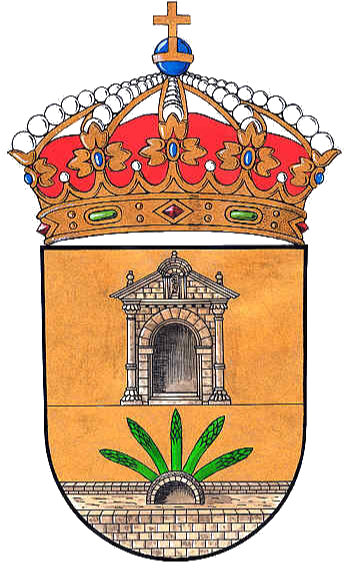When starting a DIY task, choosing the best microcontroller is one of the most important decisions you’ll make. A microcontroller functions as the mind of your project, taking care of inputs, outcomes, and processes that bring your creation to life. Brands like Dorhea use a variety of microcontrollers made for diverse applications, making it simpler to find the excellent match for your needs.
Comprehend the Requirements of Your Project
Prior to diving into microcontroller specs, outline the particular demands of your job. Are you constructing an easy temperature level sensor, a smart home gadget, or a robot with complex capabilities? The range of your job identifies the type of microcontroller you’ll call for, including elements like refining power, memory, and connectivity alternatives.
Take into consideration how many input and result pins your task will certainly require. For example, a job calling for multiple sensing units and actuators may require a microcontroller with a greater variety of GPIO (General Purpose Input/Output) pins. In a similar way, if your project entails real-time data processing, you’ll require a microcontroller with sufficient computational power.
Assess Processing Power and Speed
Microcontrollers feature varying degrees of refining power, determined in terms of clock speed (MHz) and style (8-bit, 16-bit, or 32-bit). Easier tasks like blinking LEDs or controlling a small servo motor might work perfectly with an 8-bit microcontroller. However, for even more requiring applications like photo processing or machine learning, a 32-bit microcontroller with a higher clock rate would be crucial.
Picking a microcontroller with the right balance of power and rate prevents unnecessary complexity and price. Subdued microcontrollers can drain your job’s power supply quicker, particularly in battery-operated designs.
Check Memory Requirements
Memory is one more essential consideration. Microcontrollers usually have 3 sorts of memory: Flash, RAM, and EEPROM. Flash memory shops your program code, RAM supports runtime operations, and EEPROM is used for saving data that lingers after the gadget is powered off.
If your job includes a big codebase or requires storing considerable quantities of data, go with a microcontroller with adequate Flash and RAM. Conversely, less complex tasks with marginal memory needs can run successfully with reduced capacities.
Assess Connectivity Options
Modern DIY tasks often need connectivity attributes to interact with various other tools or networks. Depending on your task, you may require microcontrollers with integrated communication protocols such as UART, I2C, SPI, or CAN. For wireless connectivity, consider versions with integrated Wi-Fi, Bluetooth, or LoRa abilities.
As an example, if your DIY job includes producing a smart home gadget that interacts with a smart device app, you’ll need a microcontroller with Bluetooth or Wi-Fi support. Ensure the picked microcontroller is compatible with the interaction protocols of your other project parts.
Power Consumption and Efficiency
Power consumption is an essential variable, especially for battery-operated or mobile tasks. Some microcontrollers are developed with energy efficiency in mind, including low-power modes to prolong battery life. Evaluate your project’s power spending plan and choose a microcontroller that lines up with your energy needs.
For solar-powered or long-term jobs, focus on microcontrollers with ultra-low power consumption. Balancing efficiency and effectiveness ensures your task runs efficiently without frequent battery replacements or excessive power costs.
Ease of Programming and Ecosystem Support
The simplicity of programming and the schedule of development tools considerably affect your microcontroller selection. Popular microcontroller families like Arduino, ESP, and STM32 feature comprehensive collections, tutorials, and community support, making them beginner-friendly. A solid ecological community can conserve time and reduce the knowing contour, particularly for those brand-new to microcontrollers.
Make sure that the microcontroller’s integrated advancement atmosphere (IDE) is compatible with your preferred programs language. A lot of microcontrollers assistance C/C++, but some likewise enable shows in Python or JavaScript, accommodating a bigger variety of developers.
Physical Form Factor
The size and shape of a microcontroller can influence its compatibility with your project. For compact styles, think about microcontrollers in smaller sized type aspects like QFN or WLCSP packages. Advancement boards, such as Arduino or Raspberry Pi Pico, provide easy to use choices with pin headers and pre-soldered parts, ideal for prototyping.
If your task includes combination into a tightly loaded room, take note of the physical dimensions and installing options of the microcontroller or its advancement board.
Price and Availability
Microcontrollers are available in a broad rate variety, from affordable alternatives for easy tasks to high-end models for complex applications. Establish a spending plan early and study versions that fit within your economic constraints. Remember that higher-priced microcontrollers commonly come with sophisticated attributes, so ensure you’re not paying for capabilities your job doesn’t require.
Furthermore, take into consideration the schedule of the microcontroller in your area. Choose designs with regular stock levels and trusted vendors to prevent hold-ups in your job timeline.
Trial and error and Prototyping
If you’re not sure regarding the most effective microcontroller for your job, begin with prototyping boards that enable trial and error. Systems like Arduino and ESP32 provide flexibility to test various functionalities prior to completing your style. These boards commonly come with extra peripherals and a large support community, enabling quick growth and troubleshooting.
Final thought
Picking the appropriate microcontroller for your DIY task includes balancing technical specifications, task requirements, and monetary restrictions. By understanding the core demands of your task and examining aspects such as processing power, memory, connectivity, and power efficiency, you can make a notified decision. With careful preparation and trial and error, the ideal microcontroller will serve as the foundation for a successful DIY production.

